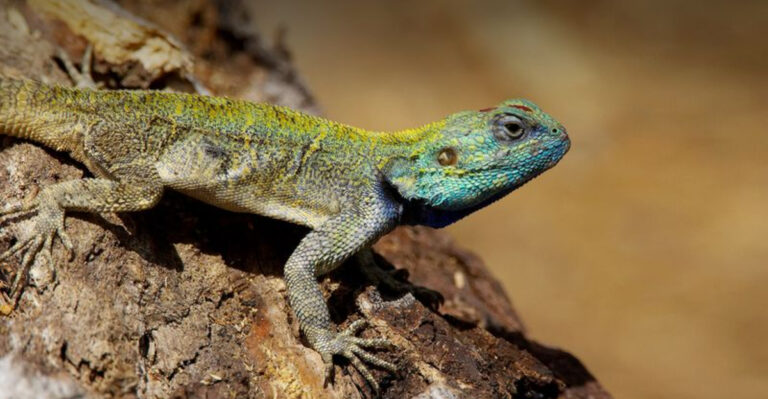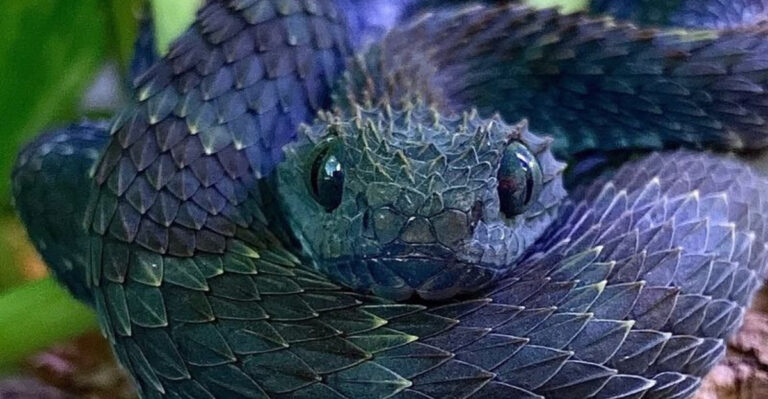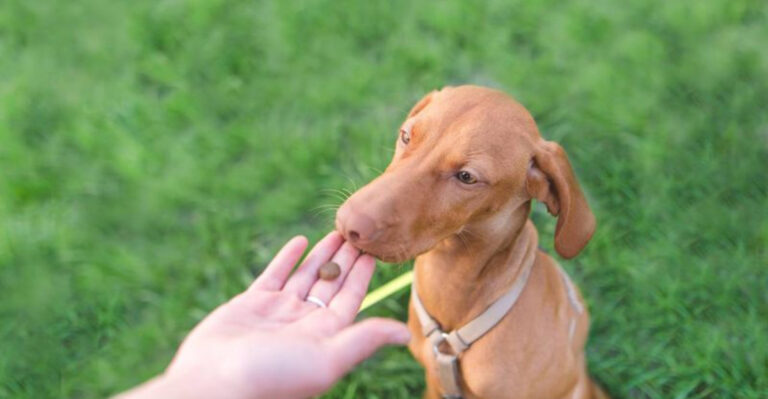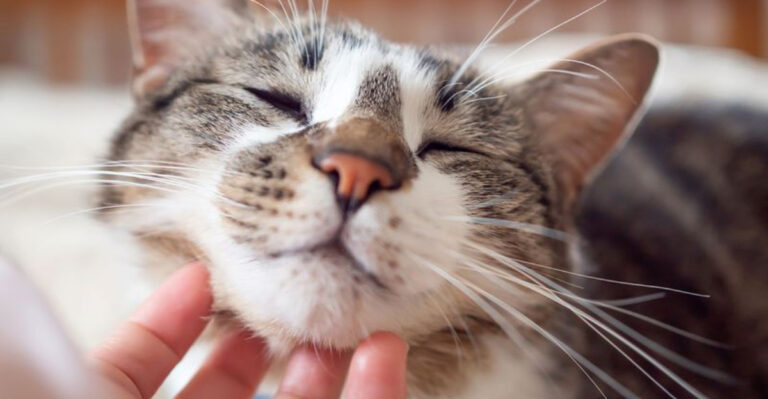3 Venomous Snakes You Might Encounter In Virginia (And 10 That Are Non-Venomous)

Virginia’s diverse landscapes are home to a variety of slithering reptiles, from mountain forests to coastal plains.
While most snakes in the state are harmless and beneficial for controlling pest populations, knowing which ones pose a danger is essential for outdoor enthusiasts. Let’s explore the three venomous species you might encounter and ten harmless snakes that help maintain Virginia’s ecological balance.
1. Eastern Diamondback Rattlesnake
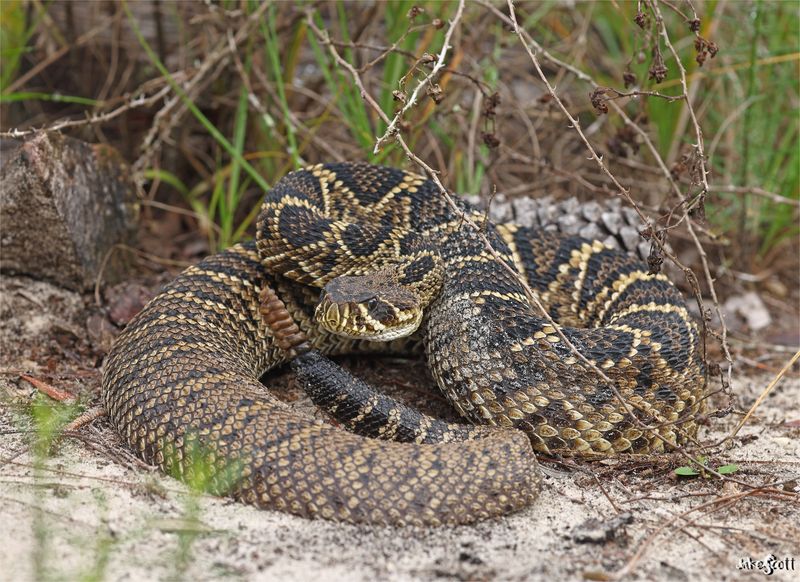
America’s largest venomous serpent commands respect with its diamond-patterned back and signature rattle warning.
These muscular predators can reach six feet long and prefer Virginia’s pine forests and grassy areas. Despite their intimidating size, they typically avoid human contact, only striking when cornered or threatened.
2. Timber Rattlesnake
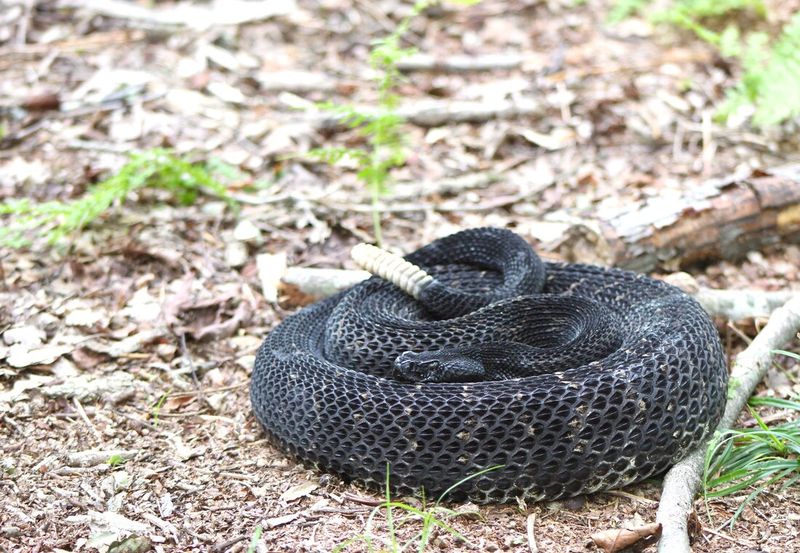
The woodland drummer announces its presence with a buzz from its keratin-filled tail. Adorned in yellow or brown with dark crossbands, these adaptable hunters roam Virginia’s mountains and forests.
Their distinctive rattling serves as a polite but serious warning to give them space—a warning worth heeding for hikers and campers alike.
3. Copperhead
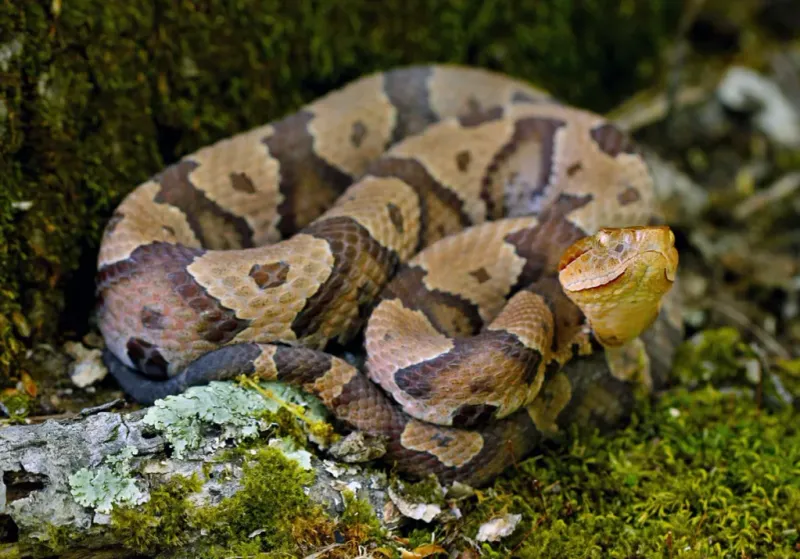
Master of disguise, the copper-crowned serpent blends perfectly with autumn leaves on forest floors. Their hourglass-shaped bands and coppery heads make identification possible, though challenging when they’re motionless.
Unlike their rattling cousins, these quiet hunters strike without warning, making them responsible for most venomous bites in Virginia.
4. Eastern Rat Snake
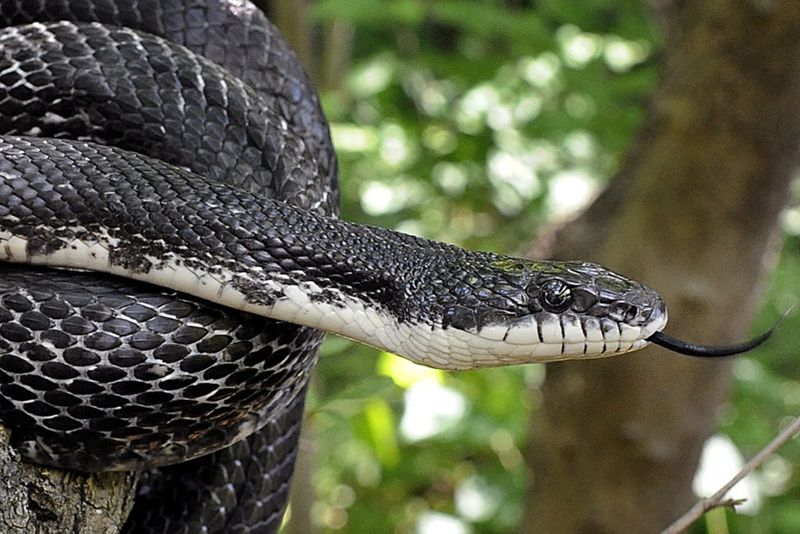
Nature’s pest control specialists grow impressively large, often exceeding six feet in length. These glossy black climbers can scale walls and trees with remarkable agility, hunting mice and rats in barns, attics, and woodpiles.
Farmers appreciate these beneficial constrictors that keep rodent populations in check without posing any threat to humans.
5. Black Racer

Lightning-quick and inquisitive, these sleek obsidian hunters live up to their racing name. With raised heads and alert eyes, they actively patrol Virginia’s meadows and woodlands during daylight hours.
When spotted, they’ll dash away at impressive speeds rather than confront humans, using their remarkable agility to escape potential threats.
6. Northern Watersnake
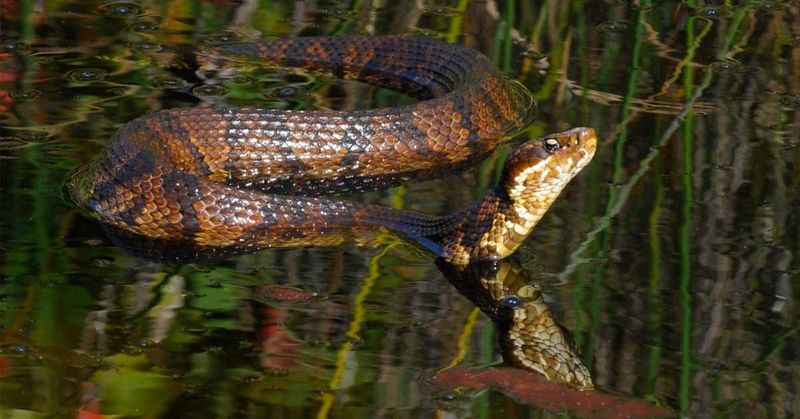
Riverside residents with attitude, these aquatic serpents are often mistaken for cottonmouths. Their dark banded patterns and tendency to flatten their bodies when threatened create undeserved fear.
Perfectly at home in Virginia’s lakes and streams, they hunt fish and amphibians while basking on shoreline rocks and branches.
7. Eastern Milk Snake
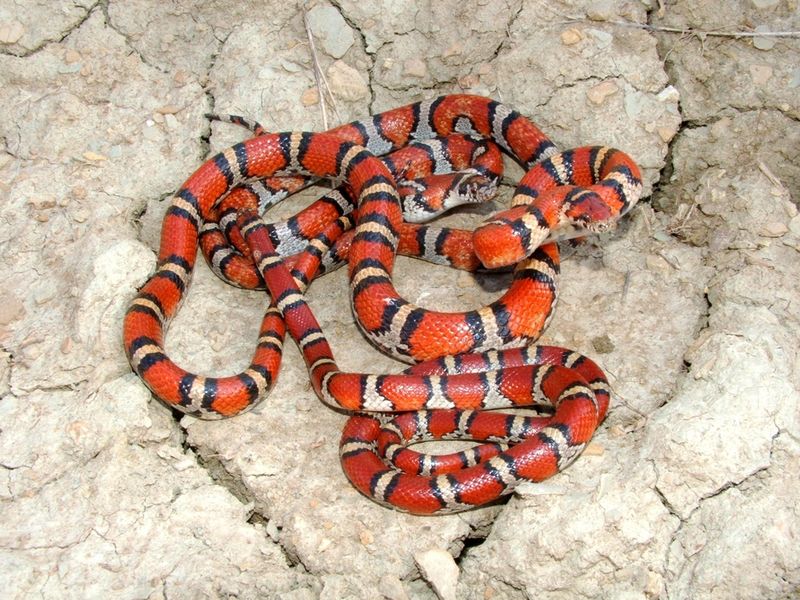
Royalty in disguise, these tricolor beauties wear a crown of Y or V-shaped markings on their heads. Their vibrant red, black, and cream bands mimic coral snakes, though the dangerous lookalikes don’t live in Virginia.
Old folklore claimed they stole milk from cows—a charming myth about these harmless rodent hunters.
8. Virginia Corn Snake
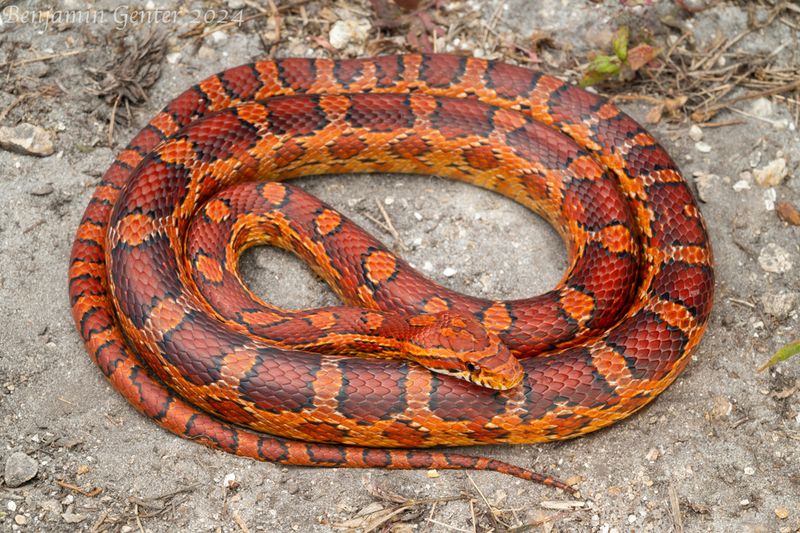
Sunset-colored and gentle-natured, these coppery constrictors sport rusty-orange patterns that inspired their name.
Popular in the pet trade for their docile temperament, wild corn snakes thrive in Virginia’s agricultural areas. They earned their name hunting mice in corn cribs and storage buildings, providing farmers with free pest management services.
9. Garter Snake

Backyard buddies with racing stripes, these slender garden helpers rarely exceed three feet in length. Distinctive yellow or white stripes run along their dark bodies from head to tail.
Gardeners should welcome these slug-eating allies that help control pests while posing absolutely no threat to humans or pets.
10. Ringneck Snake

Tiny jewels of the forest floor, these diminutive serpents rarely grow longer than a pencil. Their namesake bright yellow or orange collar contrasts beautifully against smooth gray-blue or black bodies.
When threatened, these secretive creatures curl their tails to display startlingly bright undersides—a harmless warning display to potential predators.
11. Dekay’s Brown Snake
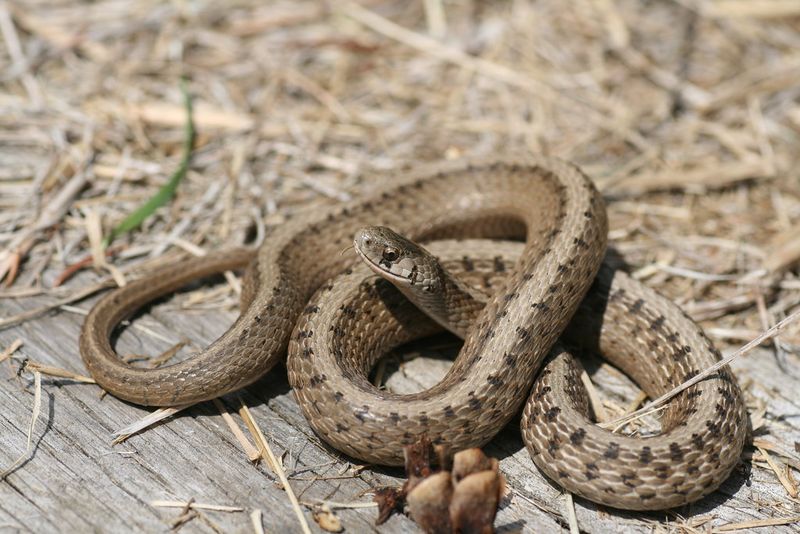
Urban adapters no bigger than a shoelace, these unassuming reptiles thrive where others cannot. Measuring just 9-13 inches, they hunt slugs, worms, and insects in Virginia’s gardens and parks.
Their petite size and secretive habits mean many residents never notice these beneficial neighbors living right under garden stones and mulch piles.
12. Northern Pine Snake

Forest giants with powerful hugs, these impressive constrictors can reach impressive lengths of six feet or more. Their bold black or brown blotches against white or cream backgrounds make them distinctive Virginia residents.
Unlike many snakes, pine snakes will stand their ground when threatened, hissing loudly and vibrating their tails against dry leaves.
13. Southern Black Racer
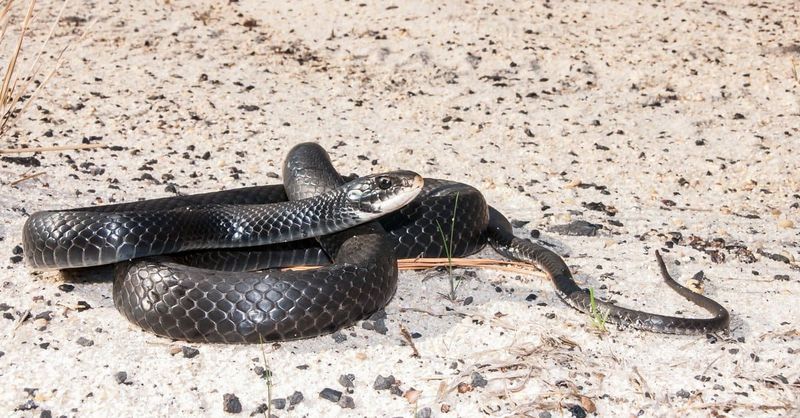
Ebony speedsters of southern Virginia, these glossy athletes patrol open grasslands with purpose. White chin patches contrast against their otherwise jet-black bodies as they hunt lizards, insects, and small mammals.
Though they may stand their ground when cornered, their bite is harmless—their real defense is simply outrunning anything that threatens them.

